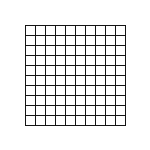|
feedmegin posted:As pointed out, that's exactly why the ordnance involved matters. Exocets and suchlike carried by NATO frigates are going to bounce off the armour of an Iowa that was built to withstand 16" shells (and we are talking about sinking it not mission kill so knocking the radar off doesn't count). Massive Soviet stuff (missile or torpedo) built specifically to KO a carrier is probably a different matter, though. Cessna posted:No! Polyakov posted:A lot of the damage control lessons were learned in WW2, damcon wasnt really a major feature of US naval expeditions for a long time afterwards for fairly self evident reasons.
|
|
|
|

|
| # ? May 15, 2024 17:06 |
|
Comrade Gorbash posted:Lessons that couldn’t have been included in the design of the pre-WW2 Iowa-class. Damage control is a thing you do as a crew, more so than something you build into the design, I think? (though obviously both). Something something Japanese carriers only having specific people trained in it which fucks you if they die horribly, etc.
|
|
|
|
feedmegin posted:Damage control is a thing you do as a crew, more so than something you build into the design, I think? (though obviously both). Something something Japanese carriers only having specific people trained in it which fucks you if they die horribly, etc. You can design damage control into a ship. Things to make it easier to segrate the ship for firefighting. Having redundant systems for things like firefighting so if one system gets hit you don't lose all pressure to your hoses. Putting damage control lockers in spots that make it easy to get materials where they need to be.
|
|
|
|
Thomamelas posted:You can design damage control into a ship. Things to make it easier to segrate the ship for firefighting. Having redundant systems for things like firefighting so if one system gets hit you don't lose all pressure to your hoses. Putting damage control lockers in spots that make it easy to get materials where they need to be. Yeah, one of the legit edges that the Kriegsmarine had going into WW1 over the Royal Navy had to do with redundancy in design with their dreadnaughts. It's been a while since I read up on it, but poo poo like how compartmentalized they were. KM ships would be broken up into many more sub-compartments than the RN ships, which in turn meant that it was easier to isolate flooding and fires. They also had some superior ammo handling procedures that led to a lower risk of catastrophic magazine explosions, although I'm hazy on the details of what that involved. Maybe one of the actual naval historians will be around to expand/correct me.
|
|
|
|
Thomamelas posted:You can design damage control into a ship. Things to make it easier to segrate the ship for firefighting. Having redundant systems for things like firefighting so if one system gets hit you don't lose all pressure to your hoses. Putting damage control lockers in spots that make it easy to get materials where they need to be. Plus designing the ship's systems so that shock damage doesn't do things like knock the engines off their mounts, fracture the chillwater pipes that keep your computers operational, short out busbars in your distribution panels, etc. That's a thing that took WWII to learn: even if a ship isn't hit directly the shock from a nearby explosion can kill critical ship systems. This led to the shock-hardening of Navy ships and ship systems, MIL-S901D, in which systems are typically installed on a barge with UNDEX set off nearby to verify that the thing continues to work. And it culminates in the Total Ship Survivability trial, where the Navy sets a big fuckoff bomb off next to a working and crewed ship: https://www.youtube.com/watch?v=4jdnG90ipo8 The ship-level test usually shakes out a bunch of things that the system-level testing didn't pick up (which is as you'd expect). This is something that just wasn't done or understood when the Iowas were built.
|
|
|
|
Cyrano4747 posted:Yeah, one of the legit edges that the Kriegsmarine had going into WW1 over the Royal Navy had to do with redundancy in design with their dreadnaughts. It's been a while since I read up on it, but poo poo like how compartmentalized they were. KM ships would be broken up into many more sub-compartments than the RN ships, which in turn meant that it was easier to isolate flooding and fires. They also had some superior ammo handling procedures that led to a lower risk of catastrophic magazine explosions, although I'm hazy on the details of what that involved. Maybe one of the actual naval historians will be around to expand/correct me. German dreadnoughts were designed with the principle theory that the purpose of a ship is to stay afloat in the North Sea. British dreadnoughts were designed to go fast, hit hard, and have the endurance to get round the world. They did have this edge, but it was more a result of prioritisation in design than being fundamentally better. Likewise British ships had all the flash doors installed to stop catastrophic ammo explosions - but they chose to keep them open in order to improve rate of fire because it was thought that shooting faster was probably more likely to keep you alive in the long run. This turned out to be a mistake, but it's important to distinguish between a deliberate choice and a flawed design.
|
|
|
|
WW2 Data This week sees a small update for US Army practice bombs. Why is the M75 loaded with hematite? Which spotting charge uses a glass bottle? Is this the link to last week's update? All that and more at the blog!
|
|
|
|
Cessna posted:They had bellows-sewn buttoned pockets on a shirt inside a tunic which had bellows-sewn buttoned pockets that was itself inside a smock that made all those pockets unreachable, and that smock itself had reversible buttoned pockets that were stuffed under the field gear. Your German uniform posts are loving great, I love how their uniforms are hosed up in the exact same way their tanks are. I'm reading Ostkrieg right now, which is an account of the Eastern Front, mostly from ther perspective of the Germans, and focused on the machinations and internal politics of the Nazis and the Holocaust. It is fascinating as hell how those assholes were basically just making poo poo up as they went and had absolutely no long-term plans whatsoever and just stumbled into every one of their great successes and greater failures. One particularly fascinating episode is the how the Nazis crossed the threshold over to actually planning genocide and mass murder on the scale of millions - Up until 1941 they hadn't actually planned any genocide - To be sure Hitler had made vague threats about the "end of jewdom in Europe", and there had been a lot of mass killings in Poland, but the people in charge of the apparatus of the state hadn't actually planned to kill millions of people in concrete terms, or even said it out loud to each other. Hitler had decided to invade the USSR, with the economic justification of the agricultural land of the Ukraine being necessary to feed the Reich, especially now that it had to feed the people living in all the conquered territories as well. When Nazi economic planners set about evaluating how much food the Ukraine actually produced, they found that far from being the inexhaustible cornucopia of Nazi myth, it was barely producing surplus food. They estimated that not only would the Ukraine not meet the grain requirements of the Reich, they predicted that if conquered immediately, it wouldn't even produce a surplus until 1944. One of the economic planners of the Heer came up with a simple and shockingly brutal solution to this - What if, after conquering the USSR, we just don't feed the people that aren't needed to produce food and ship all the food to the Reich, solving our food security problem and incidentally condemning tens of millions to death by starvation? This guy then presents this plan to Hitler and the Heer, and half expects to be shouted down for this unbelievably inhumane notion - But, instead, everyone just kinda nods along and immediately starts planning out the practical aspects of this plan. From this point on the murder of tens of millions was an official plan of Nazi foreign policy.
|
|
|
|
Comrade Gorbash posted:Lessons that couldn’t have been included in the design of the pre-WW2 Iowa-class. They could however be included in retrofits during wartime and more importantly in training for the crew, I would expect the crew of iowa in 1945 to be probably more on their damcon game than the crew of nimitz in 1970 just due to differences in priority of training at different points in history.
|
|
|
|
EDIT: Probably best not to go there.
Gnoman fucked around with this message at 02:55 on Oct 30, 2018 |
|
|
|
|
Geisladisk posted:I love how their uniforms are hosed up in the exact same way their tanks are. And Wehraboos go on and on about "German efficiency." Once you start really digging into this stuff and looking at it up close you see that they couldn't even design a jacket.
|
|
|
|
Cessna posted:And Wehraboos go on and on about "German efficiency." Good gas cans though! I was going to call them solid, but that would imply that they were in fact bad in this case...
|
|
|
|
What are some good books on deep battle? I have Issersons own book (the operational art), but im looking for another view on it. Preferably something after the fact.
DJ Dizzy fucked around with this message at 09:48 on Oct 30, 2018 |
|
|
|
Cessna posted:And Wehraboos go on and on about "German efficiency." What they are, is perfectionist.
|
|
|
|
Corsair Pool Boy posted:Good gas cans though! Stahlhelm was a pretty good, simple to make design too IIRC.
|
|
|
|
Complicated designs are probably not that bad if you can just crank them out on a big stamping machine, less good if you have to individually hand assemble everything. Wasn't it a thing that the soviets were keen on nabbing various metal stamping specialists from the Germans after WWII?
|
|
|
|
Milo and POTUS posted:Stahlhelm was a pretty good, simple to make design too IIRC.
|
|
|
|
HEY GUNS posted:i have lived there for six months a year for the past four years and i've spent three months in austria. they're not efficient, in fact they are startlingly inefficient. They also don't work as long as we do--their stores close very early and their archives close for several days out of every week. I showed that Parshall video on tank production to my students last year when we were covering WW2 and 20th-century ideologies and they were like "wow it's actually incredible how their ideological predispositions towards certain beliefs can be seen in the most minute details of something as boring as tank production" (not an exact quote) and I was very proud.
|
|
|
|
HEY GUNS posted:nope, needs ten steps compared to the brodie helmet's one You will notice that Brodie inspired gently caress all helmet designs after the war while the Stahlhem at least looks similar to PASGT and later helmets.
|
|
|
|
Isn't that because the Brodie helmet was designed around protection from overhead shrapnel while a soldier is in a trench, and that sort of warfare became less of a thing with WWII?
|
|
|
|
JcDent posted:You will notice that Brodie inspired gently caress all helmet designs after the war while the Stahlhem at least looks similar to PASGT and later helmets. very different manufacturing techniques made it a lot easier to build a molded slightly more efficient shape sure the stahlhelm is slightly better from a end-user perspective than a brodie but if you can make more helmets faster with less material waste that is a lot more important in an existential war than the perfection of the design something that germans still fail to realize right now, all the time
|
|
|
|
KYOON GRIFFEY JR posted:very different manufacturing techniques made it a lot easier to build a molded slightly more efficient shape
|
|
|
|
yeah i mean we kind of do it to death but i think japanese pilot training made sense in the context of their overall strategy and doctrine - if you believe that you are going to win the war in one or a series of decisive battles, a significant qualitative edge in pilot training is potentially decisive. of course the decisive battle concept was flawed, so it didn't work.
|
|
|
|
Cyrano4747 posted:Yeah, one of the legit edges that the Kriegsmarine had going into WW1 over the Royal Navy had to do with redundancy in design with their dreadnaughts. It's been a while since I read up on it, but poo poo like how compartmentalized they were. KM ships would be broken up into many more sub-compartments than the RN ships, which in turn meant that it was easier to isolate flooding and fires. They also had some superior ammo handling procedures that led to a lower risk of catastrophic magazine explosions, although I'm hazy on the details of what that involved. Maybe one of the actual naval historians will be around to expand/correct me. German battleships in the WWI period (Kaiserliche Marine, not Kriegsmarine) generally had more compartments than their British counterparts, yes. This didn't necessarily make them more survivable than the British ships, especially when it came to flooding. While there were more compartments, there were also more things like voice pipes and ventilation trunks penetrating the bulkheads between compartments, providing paths through which water could flow between the compartments. The German ships also had a major vulnerability in that they had more submerged torpedo tubes. A submerged torpedo tube requires a large compartment, unbroken by any watertight bulkhead. German ships typically had four submerged tubes, one each in the lightly armoured bow and stern, and two in a single unbroken flat between both sides of the ship beneath A turret, pointing to either flank. British ships just had the two flank tubes. Flooding of these torpedo flats, especially the bow flat, was responsible for the sinking of Lützow at Jutland. British ships were generally more resilient to flooding than German ships, especially after damage control procedures were refined following the loss of Audacious to a mine in October 1914. At Jutland, four British ships suffered serious flooding: Malaya, Marlborough, Warspite and Tiger. In all four ships, the flooding never reached a level where it was overwhelming the pumps, barring a single brief crisis aboard Marlborough when a pump became clogged by loose coal. In comparison, seven German ships suffered severe flooding. On four of them, the flooding could not effectively be controlled by the ship's pumps. Lützow would sink, while Seydlitz and Derfflinger would likely have sunk had the weather been worse, or if the journey home had been longer (when she reached home, Seydlitz had no buoyancy in her bows, and they were beginning to dip into the water, while Derfflinger was only saved from the same fate because her bow torpedo flat did not have time to flood before she reached port). The ammunition handling procedures are a similarly complex issue. The two navies used different propellants. For the Royal Navy, this was Cordite MD45 (30% nitrogycerine and 65% nitrocellulose with 5% petroleum jelly as a stabiliser), while for the Germans, it was RP C/12 (25% nitroglycerine, 69% nitrocellulose, 4–7% Centralite, which acted as solvent, stabiliser and flame moderator, and 0.5% other stabilisers). Cordite was, as the name suggests, extruded as a cord, while RP C/12 was extruded as a hollow tube. This meant that RP C/12 burnt cooler than British propellants and produced lower pressures. Cordite used a volatile solvent, while the Centralite used in RP C/12 was non-volatile. This meant that cordite had a certain shelf life. Gunnery officers were supposed to check the cordite in their magazines to ensure that there was no unsafe cordite aboard, but this duty was often neglected. Cordite was also frequently poorly stored, leading to a number of accidental explosions in port. The RN did not have a culture of safety around their propellants - Alexander Grant, gunner of HMS Lion at Jutland, claims to have found stokers in one of the ship's magazines, wearing hob-nailed boots, and carrying matches and cigarettes. This likely results from insufficient testing and knowledge of the danger of cordite; small scale tests suggested that cordite fires would not spread to other charges, and while the one large-scale test carried out suggested that large fires would be dangerous, it was ignored because it was felt there was no way for a small-scale fire to transition to a larger one. Gunnery Branch officers and warrant officers viewed cordite as considerably safer than black powder, and this view transferred to non-experts as cordite being almost completely safe, leading to carelessness. As a result, many British ships had a dangerous proportion of unsafe propellant aboard. It was not uncommon for ships to have charges up to ten years out of date. RP C/12 did not have a shelf-life, and could be stored indefinitely. The German propellant charges were also contained in brass cases (like a big cartridge case), and had smaller black powder igniters than British charges, making them better protected against fire. Even so, this did not necessarily make MD45 more dangerous than RP C/12. The RN had more stringent, though still insufficient, passive safety features aimed at preventing fires reaching the magazines from the turrets: when the RN inspected the surrendered High Seas Fleet in 1918, they found that the flash doors in the hoists were not up to the British standards in place in 1916, let alone those in place in 1918 after the experience of Jutland. The main thing that caused magazine explosions were fires in the turrets and working chambers (the compartment immediately below the turret where charges were removed from the hoists to the magazines and placed in hoists to the turret). If these fires could flash down the hoists to the magazines, there was little that could be done. The RN nearly had an early wakeup call for this during the Battle of the Falkland Islands. A shell hit to one of the gun positions (casemates) aboard the older armoured cruiser HMS Kent ignited charges, which flashed down to the magazines. However, thanks to quick thinking by a Royal Marine Sergeant, Charles Mayes, and a lack of charges in the ammunition passage that lead to the magazines, the fire was extinguished before it could ignite more charges. While Mays would be recommended for the VC for his quick thinking (he would ultimately receive the Conspicuous Gallantry Medal), the incident brought few repercussions. The main danger came when a shell hit a turret that was full of charges. The first such hit in the war came on a German ship at the Battle of Dogger Bank. At about 10:40, a hit from Lion ignited charges in the working chamber for D turret (the aftmost turret) aboard Seydlitz. As the chamber was overly loaded with charges, a flash fire started, quickly passing down the hoists into the magazine for D turret. With these charges ignited, the expanding gases blew open the doors to the magazine for C turret, igniting charges there. Sixty-two charges ignited, sending flames shooting out through the turrets as high as Seydlitz's mast, and killing 165 men. The magazines were swiftly flooded, saving the ship from probable destruction. The main conclusion the Germans drew from the fire aboard Seydlitz was that they needed to greatly reduce the number of charges in the turrets, working chambers and hoists. The British drew a very different conclusion from the battle. During the engagement, the British battlecruisers had achieved hit rates of ~2%, abysmally low even by the standards of WWI naval gunnery. This was because the Battle Cruiser Force (BCF) did not have a gunnery base at its base at Rosyth, to which it had been moved following German raids on the British coast. Rosyth did not have a gunnery range within its protected waters, while the waters around it were too full of mines and U-boats for it to be worth risking detaching a battlecruiser on gunnery practice. To compensate for the poor hit rates, Admiral Beatty, commanding the BCF, pushed for increased rates of fire. For most gunnery crews, the only way to achieve this was to increase the number of charges stored in the turrets, in the hoists and in the working chambers. Some crews might even have removed or disabled the flash doors and magazine doors to increase the rate of fire. On only one ship were safety procedures properly followed - Lion. Grant, who had been brought in following the dismissal of Lion's earlier gunner for lying about safety testing the cordite in her magazines, instituted a new set of routines for loading. Grant's routines allowed for an increase in rate of fire without increasing the number of charges in the system. Grant also fully changed Lion's load of cordite for new cordite, ensuring that every charge was fresh and stable. At Jutland, Grant was proven right. Aboard Queen Mary, Indefatigable and Invincible, where turrets and working chambers were filled with charges, and where old, unsafe charges were mixed in, turret hits caused flash fires and magazine explosions. Lion took a similar hit to her Q (amidships) turret. This started a small fire which smouldered for just under half an hour, despite efforts to extinguish it. After half an hour, it reached eight charges which had been in the hoists and working chamber, causing a major flash fire. However, the slow burning of the initial fire gave plenty of warning, allowing the magazine doors to be closed and the magazine to be flooded, preventing a Seydlitz-style fire, or even an explosion. The Germans, having minimised the number of charges in dangerous positions, were in little danger from propellant fires. British hits caused five turret fires in German ships. Three were minor, but the remaining two, both aboard Derfflinger, where the new regulations were not strictly observed, were more serious. The fires, which ignited an excess of charges stored in the turrets and working chambers, killed 143 men. However, thanks to the greater stability of the German propellants, and the lack of charges in the hoists down to the magazines, neither managed to reach the magazines. The explosions aboard RN battlecruisers were largely down to two factors: the composition of Cordite MD45, which was unstable and burnt at high temperatures likely to ignite other charges, and the ignoring of proper safety precautions to increase the rate of fire. Had the RN used safer propellants, like RP C/12, the impact of fires would have been reduced, even if the procedures were ignored; the results would have been closer to those experienced by Seydlitz at Dogger Bank. Similarly, if the RN had followed safe procedures, reducing the number of charges outside the magazine, turret hits would only have caused fires like those aboard Lion at Jutland. Either would have caused many casualties, but no ships would have been lost. If both had been true, then the effects of turret fires would have been small.
|
|
|
|
KYOON GRIFFEY JR posted:yeah i mean we kind of do it to death but i think japanese pilot training made sense in the context of their overall strategy and doctrine - if you believe that you are going to win the war in one or a series of decisive battles, a significant qualitative edge in pilot training is potentially decisive. of course the decisive battle concept was flawed, so it didn't work.
|
|
|
|
HEY GUNS posted:tbqh i am not sure what else could have occured to them as such a small country. any longer and the disparity in factory output will tell Japan is a pretty big country 10th largest population 61st by area, above Germany, though that gets a bit more dicey back then
|
|
|
|
HEY GUNS posted:tbqh i am not sure what else could have occured to them as such a small country. any longer and the disparity in factory output will tell yep plus the potential lack of resources to keep the factories running
|
|
|
|
pidan posted:Japan is a pretty big country i was more thinking about their factory output and food reserves but thank you welcome to the thread, pidan 
|
|
|
|
pidan posted:Japan is a pretty big country population is not that useful of a measure Japan's GDP was somewhat lower than that of Italy
|
|
|
|
Phanatic posted:Plus designing the ship's systems so that shock damage doesn't do things like knock the engines off their mounts, fracture the chillwater pipes that keep your computers operational, short out busbars in your distribution panels, etc. That's a thing that took WWII to learn: even if a ship isn't hit directly the shock from a nearby explosion can kill critical ship systems. This led to the shock-hardening of Navy ships and ship systems, MIL-S901D, in which systems are typically installed on a barge with UNDEX set off nearby to verify that the thing continues to work. And it culminates in the Total Ship Survivability trial, where the Navy sets a big fuckoff bomb off next to a working and crewed ship: This was my revelation of sorts. I had a long discussion with a couple of naval engineers and got a kindergarten education on modern ship design. I guess in my head the supercarriers were always kind of precious eggs, which as it turns out is pretty wrong. The levels of redundancy and compartmentalization and shock protection is pretty incredible. Like, the Nimitzi (and the Fords to an even greater extent) are basically four ships in one, kind of....loosely connected. In order to sink the think, you have to sink all four ships. So these guys' opinions were that an Iowa could take a couple of heavyweight torpedoes under the keel or a couple of heavyweight ASMs on the armor, and anything past that was likely to be catastrophic...particularly the torpedoes. Armor is good at resisting penetration, but it is very bad at resisting shock, and the Iowas flood control and whatnot was very poor compared to a modern carrier. The carrier on the other hand can basically soak up all of those big explosions despite not being armored, and without incurring lots of damage to very, very specific parts of the ship, it isn't going to sink. It might be a big smoking holed-out hulk, but it isn't going to sink. What I'm trying to explain here is I got owned in a ship argument by a couple of smart guys.
|
|
|
|
Aren't the carriers full of bombs and aviation fuel, though?
|
|
|
|
pidan posted:Japan is a pretty big country Germany had much better transport infrastructure, as I recall Japan was still mostly reliant on coastal shipping.
|
|
|
|
Milo and POTUS posted:Stahlhelm was a pretty good, simple to make design too IIRC. No, sorry... Here's how they were bad. First and foremost, they weren't adjustable. No, really - you had to get one that was the right size for your head, like a hat. They came with 52, 54, 56, 58, 60, or 62 cm liners and corresponding shell sizes. You could not swap a different sized liner into a non-corresponding shell. Think that makes logistics easier? Helmets were made in multiple stages with multiple mechanical presses. It took multiple individual presses to give the helmet its shape. These are WWI helmets, but the same process was followed in WWII:  There was no real assembly line - a worker would make one press, then put it on a pile. After the pile was high enough the next worker would take the helmets and carry them to the next press. This is confirmed by multiple photos of factories:  The edges were then press rolled by hand. They were also heat-tempered on the front of the helmet. This wasn't done with a huge industrial oven - there are photos of workers grabbing individual helmets with a big steel set of tongs and sticking them in an open furnace. Rivets for ventilation, the liner, and the chin strap were pressed in by hand. They were also spray-painted by hand, not on an assembly line. After the helmets were painted they were given an individual paper wrapper to make sure the paint wasn't scuffed before it was issued. Think about that for a minute. Here are helmets being wrapped:  Each helmet had two decals (until 1940), again, applied by hand. If you've ever built a model airplane, imagine having to apply thousands of decals all day long:  The liner consisted of five leaf-springs wrapped with a leather liner which was, yes, sewn in by hand. This took a LOT of specialized labor. Here's a photo of a helmet liner. (Not my helmet, but I can take a photo of one of mine if anyone is interested.) You can see the rolled rim pretty well. See that stitching on the seam in the back? Done by hand.  Here's a Fallschirmjager/paratrooper's helmet. See that stitching across the liner? Hand sewn.  In contrast, an American/British/Russian helmet was hot-stamped. This made the helmet in one step and tempered it. Each step after that was automated, done by assembly line. And helmets had adjustable liners, so any soldier could wear them. By 1942/3 the Germans stopped rolling the edges, dropped the decals, and simplified the manufacturing. Too little, too late. Cessna fucked around with this message at 14:48 on Oct 30, 2018 |
|
|
|
The liner in my m56/76 is very similar but with plastic as well as leather and the strap is way more complicated E: iirc they also have special snowflake sizes and liners and you can still get them in their original brown paper storage wrappings ContinuityNewTimes fucked around with this message at 14:43 on Oct 30, 2018 |
|
|
|
vyelkin posted:I showed that Parshall video on tank production to my students last year when we were covering WW2 and 20th-century ideologies and they were like "wow it's actually incredible how their ideological predispositions towards certain beliefs can be seen in the most minute details of something as boring as tank production" (not an exact quote) and I was very proud. Yes. I've been called in as a guest lecturer by a Prof. friend of mine to make this point in her classes using US, Soviet, and German uniforms to demonstrate these differences.
|
|
|
|
those helmets are beautiful work, but that isn't the point
|
|
|
|
GotLag posted:Germany had much better transport infrastructure, as I recall Japan was still mostly reliant on coastal shipping. I don't know anything about Japan's WWII economy, but when I hear "small country" I think of, like, Belgium or Bhutan. But yeah, you're all probably right about the military aspect. Hi Hegel!
|
|
|
|
GotLag posted:Germany had much better transport infrastructure, as I recall Japan was still mostly reliant on coastal shipping. To be fair Japan is also a lot more island-y.
|
|
|
|
Cessna posted:After the helmets were painted they were given an individual paper wrapper to make sure the paint wasn't scuffed before it was issued. Think about that for a minute. Here are helmets being wrapped: this is the most German poo poo of all time
|
|
|
|

|
| # ? May 15, 2024 17:06 |
|
feedmegin posted:To be fair Japan is also a lot more island-y. pidan posted:Hi Hegel! 
|
|
|

































